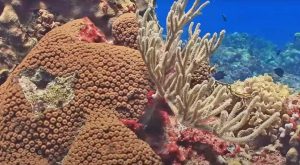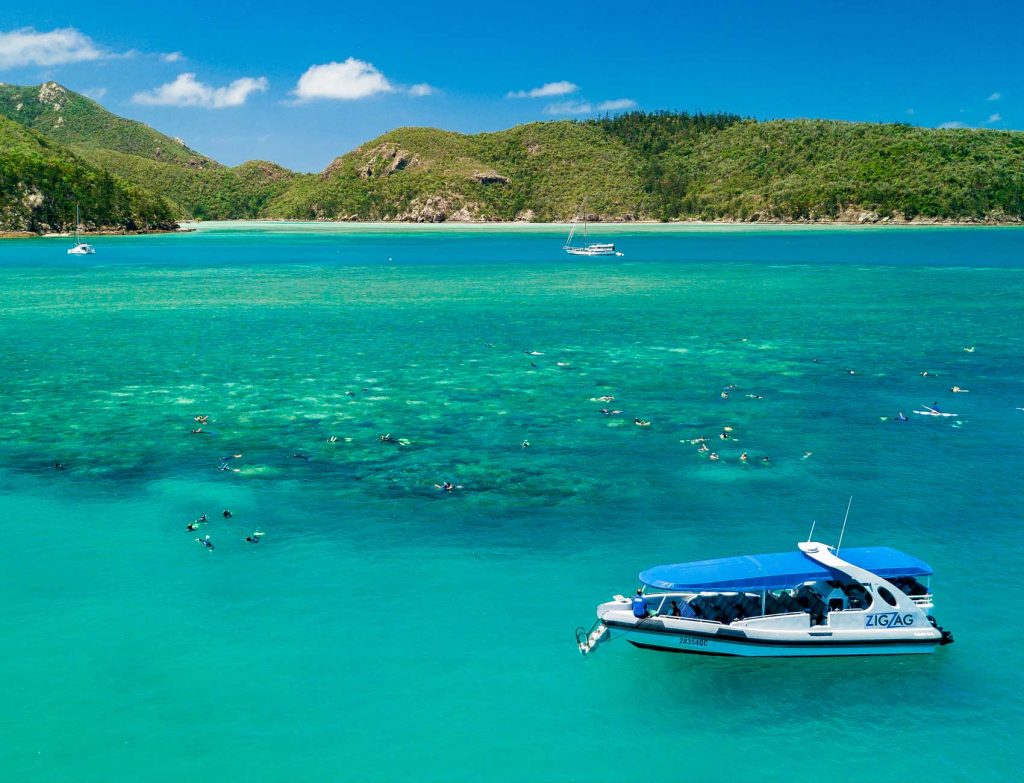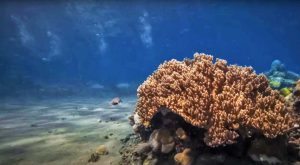The Great Barrier Reef, spanning over 344,400 square kilometres off the coast of Australia, stands as an awe-inspiring natural wonder. This magnificent ecosystem, teeming with diverse marine life and adorned with vibrant coral formations, is of immense ecological and economic importance.
However, the future of the Great Barrier Reef hangs precariously in the balance as it grapples with an array of threats. Climate change, coral bleaching, pollution, overfishing, and invasive species jeopardize the reef’s integrity and functionality.
Efforts to safeguard this precious ecosystem have been undertaken, including establishing marine protected areas, emission reduction strategies, and water quality improvement initiatives. Nevertheless, the challenges persist, particularly about coral bleaching, driven by rising water temperatures.
To preserve this invaluable natural heritage, global collaboration and concerted action must be taken. The Great Barrier Reef’s fate lies in the hands of humanity, and it is our responsibility to ensure its long-term survival for the benefit of present and future generations. Here in the Whitsunday Islands, many tour operators protect the reef by completing survey days that help the government understand any changes occurring.
Key Takeaways
- The Great Barrier Reef is the world’s most extensive coral reef system, covering an area of approximately 344,400 square kilometres and comprising over 2,900 individual reefs.
- It is of great importance as it supports a thriving tourism industry, provides habitat for countless marine species, helps protect coastlines from erosion and storm damage, contributes to global climate regulation, and generates significant economic value for Australia.
- The reef is incredibly biodiverse, hosting over 1,500 species of fish, 30 species of whales, dolphins, and porpoises, 6 of the world’s seven species of marine turtles, more than 1,600 species of molluscs, and a wide variety of corals and other invertebrates.
- However, the reef faces numerous threats, including climate change and rising ocean temperatures, coral bleaching caused by excessive heat stress, pollution from agricultural runoff and coastal development, overfishing and destructive fishing practices, and invasive species and diseases affecting coral health. Conservation efforts are being made through implementing marine protected areas, reduction of greenhouse gas emissions, regulation of fishing activities, water quality improvement programs, and research and monitoring initiatives.
Location and Size
The Great Barrier Reef, located off the coast of Australia, is a stunning natural wonder that covers an extensive area of approximately 344,400 square kilometres. It is the world’s most extensive coral reef system, composed of over 2,900 individual reefs.
This magnificent ecosystem supports a thriving tourism industry and holds deep cultural significance for Aboriginal and Torres Strait Islander people, who have traditional knowledge and practices for sustainable resource management.
The impacts of tourism on the reef are significant, drawing millions of visitors each year and generating jobs and income for local communities. However, ensuring that tourism practices are sustainable is crucial to minimize any negative impact on this precious ecosystem.
Furthermore, recognizing and respecting the Indigenous connections to the Great Barrier Reef is essential in managing and preserving this fragile ecosystem for future generations.
Importance and Value
One of the critical aspects of the Great Barrier Reef is its significant economic value for Australia. The reef supports a thriving tourism industry, drawing millions of visitors each year eager to explore its magnificent underwater world. This influx of tourists generates jobs and income for local communities, contributing to the country’s economy.
Moreover, the reef’s tourism impact goes beyond financial benefits. It raises awareness about the importance of reef conservation, educating visitors about the delicate balance of this precious ecosystem. However, it is crucial to approach tourism sustainably, minimizing the impact on the reef.
By implementing practices that prioritize the preservation of the reef, such as responsible snorkelling and diving, we can ensure that future generations can also experience the beauty and wonder of this natural treasure.

Biodiversity and Marine Life
Biodiversity in the Great Barrier Reef is characterized by a wide range of marine species, including over 1,500 species of fish, 30 species of whales, dolphins, and porpoises, 6 of the world’s seven species of marine turtles, more than 1,600 species of molluscs, and a diverse array of corals and other invertebrates. This underwater wonderland is teeming with life, offering a mesmerizing display of colours, shapes, and behaviours.
However, the very existence of this magnificent ecosystem is under threat. Climate change, rising ocean temperatures, pollution, overfishing, and invasive species pose significant risks to the reef’s biodiversity.
Thankfully, conservation efforts are underway to protect and preserve marine life in the Great Barrier Reef. Marine protected areas, reduction of greenhouse gas emissions, sustainable fishing practices, water quality improvement programs, and ongoing research and monitoring initiatives all contribute to safeguarding this precious ecosystem’s biodiversity.
These conservation efforts are crucial in ensuring the long-term survival of the Great Barrier Reef and the countless species that call it home.
Threats and Conservation Efforts
Conservation efforts are critical for preserving marine life in the Great Barrier Reef, as it faces numerous threats such as climate change, pollution, overfishing, and invasive species.
To address these challenges, a range of conservation initiatives have been implemented:
- Marine protected areas: These designated zones help protect vulnerable habitats and species from human activities.
- Climate change mitigation: Efforts are being made to reduce greenhouse gas emissions and limit the impact of rising ocean temperatures on the reef.
- Sustainable tourism practices: Visitors are encouraged to engage in activities that minimize their impact on the ecosystem, such as responsible snorkelling and diving.
- Water quality improvement programs: Measures are in place to reduce pollution from agricultural runoff and coastal development, which can harm coral health.
- Research and monitoring: Ongoing studies provide valuable insights into the reef’s condition and help inform conservation strategies.
These efforts aim to ensure the long-term survival of the Great Barrier Reef’s marine life and promote sustainable tourism practices that protect this precious ecosystem for future generations.
Frequently Asked Questions
What is the history of the Great Barrier Reef and its formation?
The Great Barrier Reef, a living tapestry of coral, has a fascinating history and formation. It began 20 million years ago as tiny coral polyps built upon the remains of their predecessors, gradually creating the world’s most extensive coral reef system.
How does the Great Barrier Reef contribute to the local economy and tourism industry?
The Great Barrier Reef’s economic impact is significant, as it supports a thriving tourism industry in Australia. Its stunning beauty and diverse marine life attract millions of visitors annually, generating jobs and income for local communities. The reef’s conservation is crucial for sustaining this industry.
Are any traditional cultural practices or beliefs associated with the Great Barrier Reef?
Immerse yourself in the rich tapestry of traditional practices and Indigenous beliefs associated with the Great Barrier Reef. From sustainable resource management to Dreamtime stories, these cultural connections add depth and meaning to the reef’s preservation.
How do scientists and researchers monitor the health and changes in the Great Barrier Reef?
Scientists and researchers monitor the health and changes of the Great Barrier Reef using various monitoring techniques. These include satellite imagery, underwater surveys, and data collection on water quality, temperature, and biodiversity. The impact of climate change is closely monitored to understand its effects on the reef.
What are some specific examples of conservation initiatives and projects focused on the Great Barrier Reef?
Conservation initiatives for the Great Barrier Reef include Reef Restoration and Adaptation Program (RRAP), Coral Nurture Program, and Crown-of-Thorns Starfish Control Program. These projects aim to restore coral reefs, control invasive species, and improve water quality to protect the ecosystem.


0 Comments